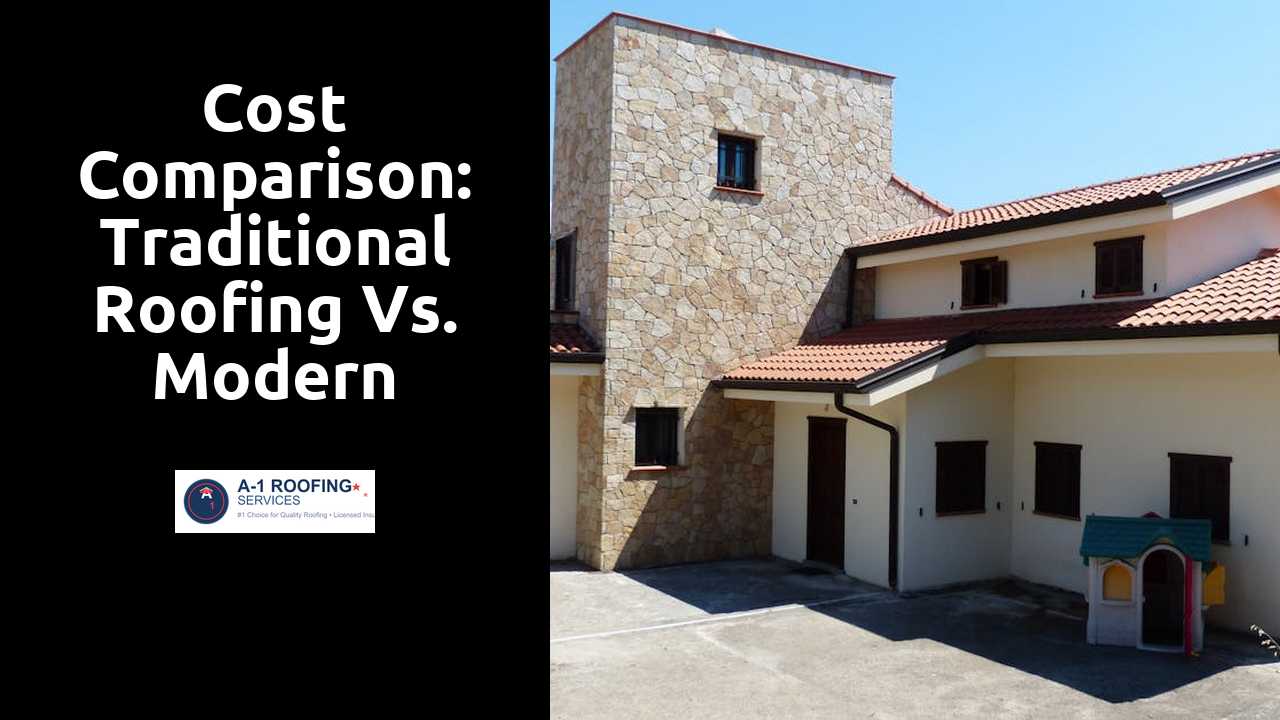
Cost Comparison: Traditional Roofing vs. Modern Solutions
Table Of Contents
Maintenance Costs Over Time
When evaluating the long-term costs associated with roofing options, maintenance plays a pivotal role. Traditional roofing materials, such as asphalt shingles, often require regular inspections and periodic repairs. Over time, exposure to weather elements can lead to significant wear, resulting in replacement costs and additional labor expenses. Homeowners must also consider expenses related to potential pest infestations and associated damage.
In contrast, modern roofing solutions, including metal and synthetic materials, generally demand less maintenance. These options often offer enhanced durability, which translates to fewer repairs over the lifespan of the roof. Homeowners can experience substantial savings over time, as modern roofs are designed to withstand extreme weather conditions and reduce deterioration. While the initial investment in these contemporary materials might be higher, the long-term financial benefits can outweigh the upfront costs.
Continue reading this article for more information.
Comparing Routine Upkeep
Routine upkeep is a critical factor in maintaining the longevity and performance of roofing systems. Traditional roofing materials, such as asphalt shingles, often require regular inspections and repairs after harsh weather conditions. This can lead to additional expenses for homeowners over time. In contrast, modern roofing solutions, like metal or synthetic materials, tend to be more durable and resistant to wear and tear. This often results in less frequent maintenance needs, allowing homeowners to save both time and money in the long run.
The differences in upkeep can significantly impact overall ownership costs. With traditional roofs, issues like moss growth or shingle curling may necessitate frequent intervention, contributing to a cycle of ongoing expenses. Meanwhile, newer materials typically come with longer warranties and claims of minimal maintenance requirements. Homeowners investing in durable modern options may find they can allocate their budgets more efficiently, reducing unexpected repair bills and enhancing overall satisfaction with their roofing investment.
Energy Efficiency Impact
The energy efficiency of a roofing system significantly influences overall home energy consumption. Traditional roofing materials, such as asphalt shingles, often absorb heat, leading to increased cooling costs during hot months. In contrast, modern roofing solutions, such as reflective coatings or eco-friendly materials, are designed to minimize heat absorption. This can result in a more stable indoor temperature, ultimately lowering energy bills and extending the life of HVAC systems.
Homeowners can benefit financially from energy-efficient roofing alternatives. Many modern solutions qualify for energy tax credits and rebates, providing additional savings. Moreover, a well-insulated roof can decrease reliance on heating and cooling systems, yielding long-term financial benefits. As energy prices continue to rise, investing in a roof with superior energy efficiency becomes increasingly appealing. This can enhance property value while contributing to a more sustainable environment.
Cost Savings from Modern Solutions
Modern roofing solutions often incorporate advanced materials and technologies designed to enhance durability and reduce long-term expenses. For example, materials like metal and synthetic shingles can withstand extreme weather conditions better than traditional options. This resilience can lead to fewer repairs and replacements over time. Many of these modern choices also come with warranties that extend for decades, bolstering their cost-effectiveness over the lifecycle of the roof.
Additionally, some contemporary roofing systems are designed for optimal energy efficiency. Cool roofs, for instance, reflect more sunlight and absorb less heat, minimizing the energy required for air conditioning during hot months. Homeowners can experience lower energy bills as a result. Investing in energy-efficient roofing not only contributes to immediate savings but may also result in tax incentives, adding further financial benefits.
Insurance and Resale Value
The choice between traditional roofing materials and modern alternatives can significantly influence home insurance rates. Insurers often consider the durability and safety of roofing types when assessing premiums. Modern materials, such as metal and synthetic options, typically offer better fire resistance and longevity. This can lead to lower insurance premiums for homeowners, reflecting the reduced risk associated with potential damage.
Resale value is another critical factor impacted by roofing choices. Homes equipped with modern roofing solutions often attract buyers due to their energy efficiency and lower maintenance needs. Traditional roofs may not provide the same appeal, potentially affecting the listing price. As the housing market increasingly favors energy-efficient and sustainable features, the appeal of modern roofing can enhance overall property value at resale.
Impact on Home Insurance Rates
Home insurance rates can be influenced by the type of roofing material used on a property. Traditional roofing systems, while familiar to many homeowners, may convey a higher risk due to susceptibility to damage from elements like wind and hail. Insurers often consider the durability and longevity of roofing materials when determining premiums. Homes with traditional roofs might face higher insurance costs, especially in areas prone to severe weather.
In contrast, modern roofing solutions often come with enhanced durability and energy efficiency. Materials such as metal or asphalt shingles with advanced coatings are designed to withstand harsher conditions, which can lead to lower insurance premiums. Insurers may recognize the reduced risk associated with these materials, offering better coverage terms for homeowners. Adopting modern roofing options can also indirectly impact the property's overall market value, making it a wise investment in the long run.
Related Links
The Role of Building Codes in Commercial Roofing ExpensesHidden Costs to Consider in Commercial Roofing Contracts